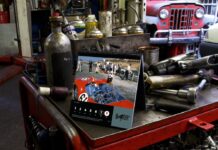It was never Dulquer Salmaan’s plan to pursue a career in the film industry. Nevertheless, around 20 million people follow the shooting star of Indian cinema on social media, and even more know his movies. We get together with him at his home in Kochi, the “Queen of the Arabian Sea,” on the Malabar Coast along the southwestern edge of the subcontinent.

The “Queen of the Arabian Sea” feels much like a ghost town. The tropical heat is oppressive, with temperatures rising well above 30 degrees Celsius in Kochi, India, this time of year. Though the rainy season is just around the corner, the pitter-patter of heavy rain is nothing more than a distant memory today. To escape the midday heat, those who can seek refuge indoors where it’s cooler. But we still have some time – and don’t let the weather stop us from exploring the coastal city in the far southwest.
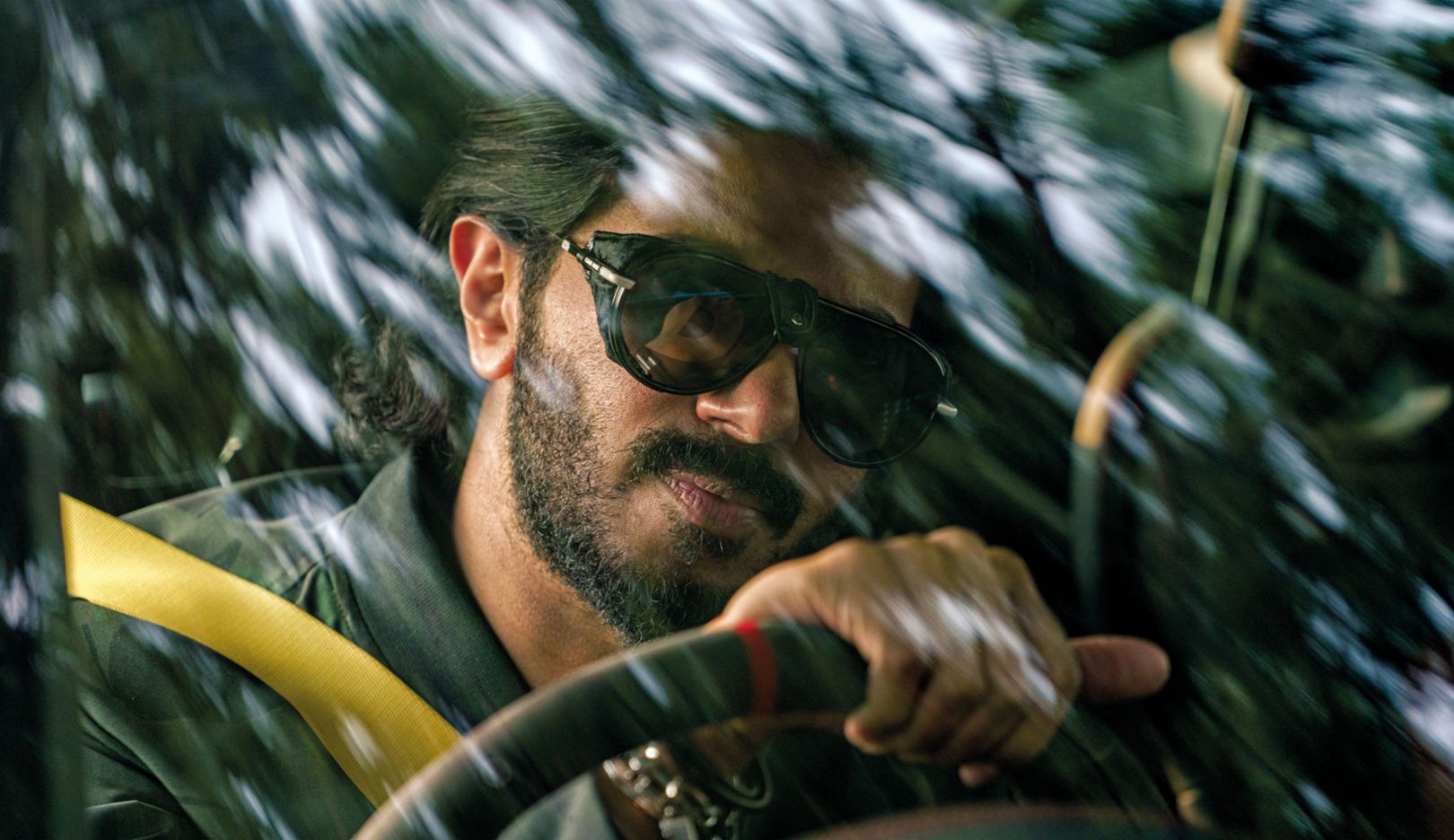
With the emptiness, the heat, and the quiet, there’s something almost magical about the atmosphere. With around 1.425 billion inhabitants, India officially became the world’s most populous country in April 2023. However, we look in vain for the expected hustle and bustle. It almost feels like we’re on a movie set – a fitting image, as the purpose of our visit is to get together with 40-year-old Dulquer Salmaan this afternoon, an actor and, in India, an absolute superstar.
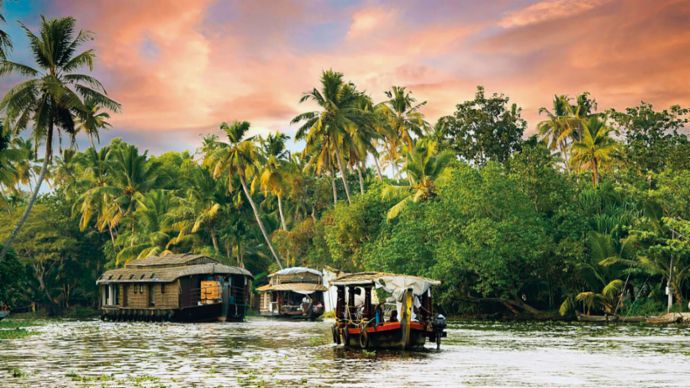
Paradise in southern India:
Just outside of Kochi, the Backwaters are a unique network of waterways with lakes, rivers, lagoons, and canals. The houseboats, which are locally referred to as “Kettuvallams,” were once used to transport spices and other foods and are now popular particularly with tourists (above). The streets are just about empty during our drive through Kochi in the GT3 (below).

Salmaan was born in Kochi. When he was just seven years old, his family moved to Chennai on the eastern coast, but his hometown left a lasting mark – and he returned. Today, he’ll frequently indulge in childhood memories, often reminiscing about the many festivals in the Mattancherry neighborhood and the candy store Ashanti Laal Mithaiwala, a 30-minute walk from Mahatma Gandhi Beach. He’ll discuss his movies Vikramadithyan, Charlie, and Solo, which were filmed here and allowed him to rediscover Kochi time and again. His hometown is a symbol of India’s rich history.
In the footsteps of Vasco da Gama
After India gained its independence in 1947, Kochi, previously called Cochin, developed into the second-largest city in the state of Kerala, which was founded in 1956. Further inland, the region is dominated by tea plantations and wild rolling hills, while near the coast there are numerous lagoons and lakes. It also encompasses several peninsulas and islands off the coast.
Measuring more than 900 kilometers in length, the canal systems are home to houseboats and bordered by picturesque villages in the shade of palm trees. For many, this area is a paradise located on the Malabar Coast, which is also referred to as the pepper coast. At the beginning of the 15th century, Kochi’s port developed into a trading center for spices, over time attracting the Chinese, Arabs, and Europeans. Kochi flourished and developed into a metropolis with its current population of 600,000.
We stroll along the promenade in the picturesque Fort Kochi district, marvel at the long line of Chinese fishing nets, whose wooden structures resemble sculptures, and visit Mattancherry, an area of cultural diversity. Churches, palaces, temples, mosques, and synagogues tower high above. We explore the narrow streets of Jew Town and the basilica on the island of Vallarpadam, which Vasco da Gama of Portugal himself visited. It was he who discovered the southern sea route to India via the Cape of Good Hope in 1498. Da Gama died in Kochi on one of his subsequent visits in 1524. To this day, remnants of his original grave can still be found in the local Franciscan church, the first European church in India. The further you delve into the city, the more you can feel its history.

Center of trade on the Malabar Coast:
Kochi has been shaped by cultural diversity since the early 15th century. The Chinese brought their traditional fishing nets, the Europeans Christian churches. The old town is also home to mosques, synagogues, and Indian palaces. The climate is tropical, and the region is considered to be one of the rainiest on the Indian subcontinent. We get together with Dulquer Salmaan in the last month before the summer monsoon.
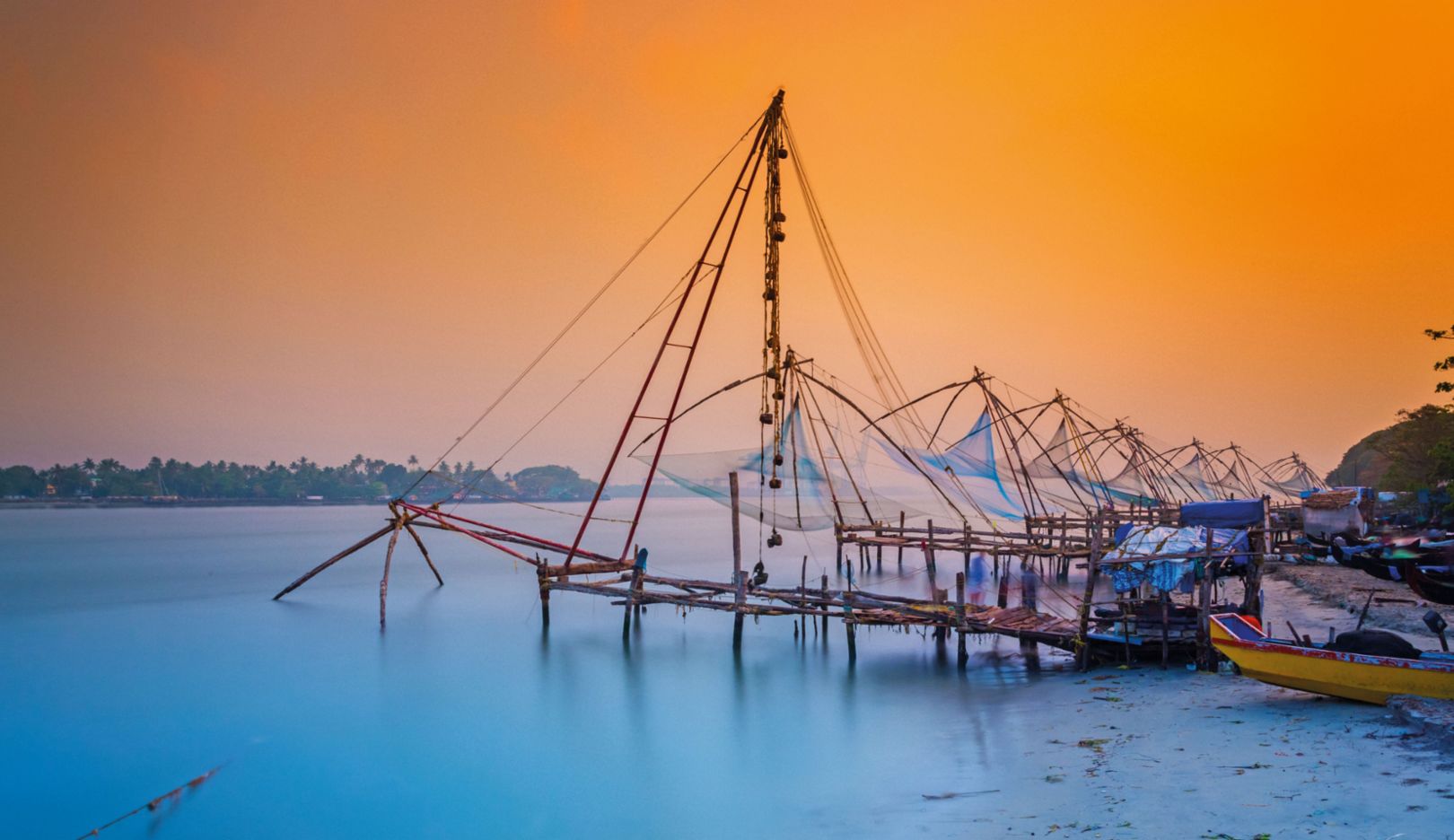
A legend’s legacy
The Salmaan family has also earned a place in the local history books. Upon our arrival at Dulquer Salmaan’s estate in the afternoon, our host welcomes us with a big smile. His Panamera Turbo, 911 GT3 (991), and 911 Carrera S (997) are parked in front of the house. The garden is filled with plants that are exotic to us, and the house resembles an art studio. Salmaan lives here with his wife Amaal Sufiya and their daughter. Family is important to him. Like most of his interests, his career, and his hobbies, his passion for Porsche is connected directly to his family.
As is the case for many, it all began with a distant childhood memory. “We were in Oman,” Salmaan recalls. “One of my father’s friends had bought a Porsche 944. I couldn’t take my eyes off the car and tried to pronounce the company name correctly. And then we went for a drive in the dark – that’s how it all began.” Even his father, Mammootty, long dreamed of having a Porsche for the entire family. “That’s what I like about the Panamera,” says Salmaan junior. “It has tons of space.” In the mid 1990s, his father chose not to purchase a 911 because of the two children, a bitter disappointment for son Dulquer at that time. His father, too, only acquired a few models later on in life. And the two of them have something else in common: Mammootty is also an acting legend in India, having filmed nearly 400 movies in around 50 years. No one had ever expected Dulquer Salmaan to follow in his father’s footsteps.
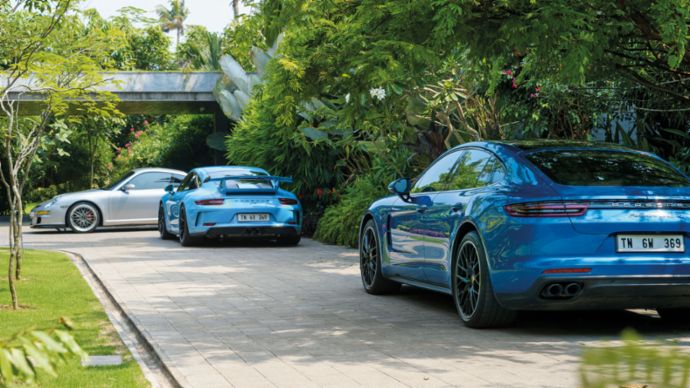
The passions of an Indian movie star:
When 40-year-old Salmaan is not in front of the camera, he prefers to spend his time with his family on his estate (below), where he lives with his wife, his daughter, and his parents. His fleet (above) includes a 911 Carrera S (997), a 911 GT3 (991), and a Panamera Turbo.
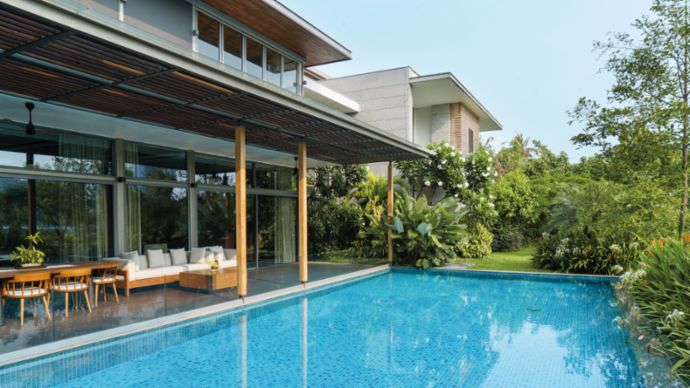
“Early on, I didn’t have much to do with creative people beyond my family,” he says. After school, he studied economics and worked as a manager at various companies. “But I wasn’t happy anywhere and I never had the feeling that my efforts were rewarded.” But then some of his friends began producing short films – and Salmaan got involved. He enjoyed the shoots more and more, worked up to 18 hours a day, and discovered what it was like to pursue his passion. “I was impressed by the creative process,” says the actor. “I gradually grew up and realized that I could overcome my fears by facing them. It makes you happier and allows you to achieve inner peace.” It was a moment that would take Salmaan’s life in a different direction.
“Facing your fears makes you happier – and allows you to achieve inner peace.”
Dulquer Salmaan
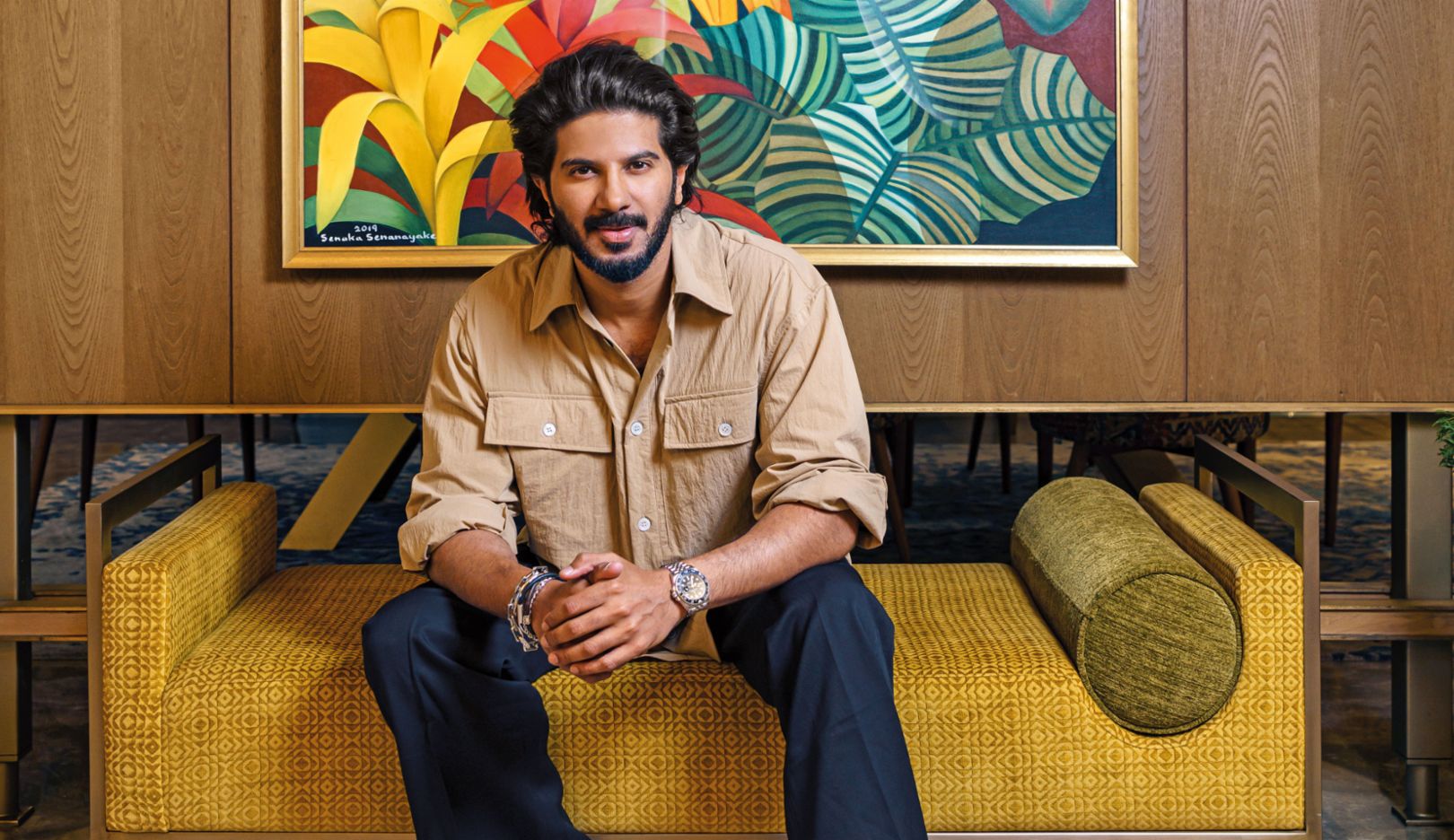
A superstar in eleven years
Today he’s a star of Indian cinema, which encompasses so much more than the internationally known Bollywood. While the term combining “Bombay” and “Hollywood” globally represents commercial film production on the subcontinent, it actually only refers to films produced in Hindi. With up to 1,000 movies a year, the Hindi industry is one of the most productive in the world, but it’s not the only one in India. Just about every state has its own film industry. And there are 22 official languages in India. Salmaan appears on screen for Hindi productions in Bollywood as well as in his home state of Kerala, where Malayalam is spoken. He has also appeared in movies in the Tamil and Telugu languages. “When I work in different languages, I experience the same thing as any other Indian travelling through the country,” says the actor. “I experience all the different cultures, and yet the stories somehow feel Indian. As long as I can speak the language to some degree, I still feel at home.”
Salmaan has filmed nearly 40 movies since his debut eleven years ago and has won more than 20 awards. Diversity is important to him, and he films comedies, dramas, and thrillers. “I’d like for every film to be different from the one before it,” he says. He wants to follow his own path and prepares for his roles with a great deal of precision. For the figure of actor Gemini Ganesan in the biopic Mahanati, he visited Ganesan’s family and studied the mannerisms of the Tamil silver screen legend. Ganesan was a movie star in the 1950s, appeared in more than 200 movies, and is still considered to be the “King of Romance” in India to this day.
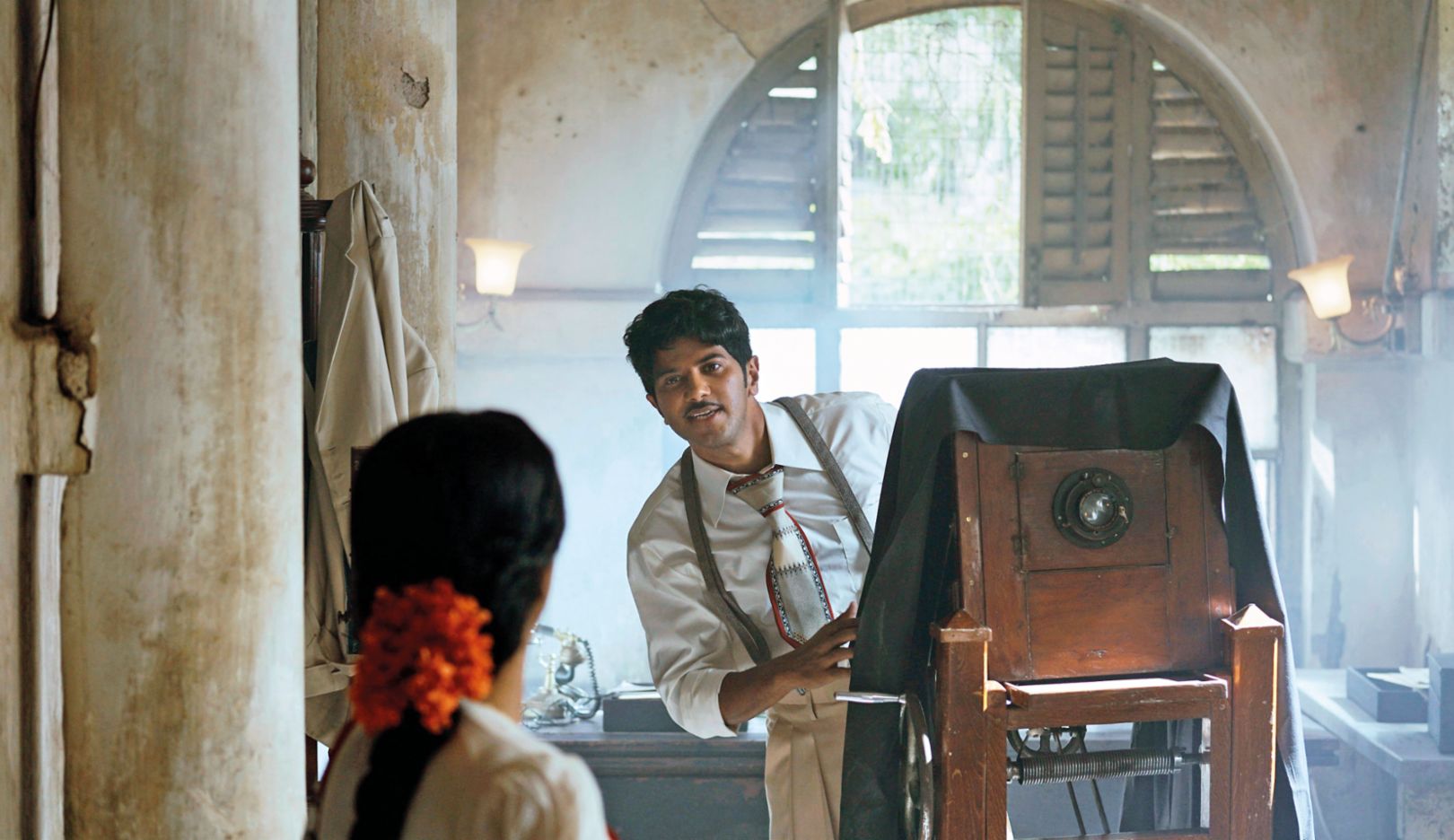
Quick-change artist:
Salmaan embodies the Indian film legend Gemini Ganesan in the biopic “Mahanati”.
“If I stay true to this path, I’ll hopefully be able to honor my father’s name,” says Salmaan smiling. “I find inspiration in his values, but never try to imitate him. I want to leave behind my own legacy.”
“I would like to honor my father’s name.”
Dulquer Salmaan
Art as an aesthetic school
Salmaan points overhead to a painting by Sri Lankan artist Senaka Senanayake. He has always been fascinated by art. “I think that’s why my tastes and my perception continue to improve, even when it comes to movies,” he says. “There were always paintings, sculptures, and music in the houses I lived in as a child. That helps me to choose movies that correspond with my aesthetic tastes.” There’s a new work of art in every room in Salmaan’s house. He’s impressed by the Indian artists Bhavna Sonawane and Gunda Anjaneyulu. But he also has a collection of old Indian maps from the era of the British Raj.
And then he returns to the topic of Kochi, his anchor. Kochi-Muziris Biennale, India’s first exhibition of this kind, was held here recently. “The event can compete internationally with the best events in the art industry,” says Salmaan.
Launched in 2012, the Biennale is now the country’s most important art exhibition and the largest festival for contemporary art in Asia. When it opened its doors eleven years ago, Salmaan was able to enjoy the works of art produced by the region’s young, up-and-coming artists without a care in the world. With more than 20 million followers on social media, it’s a little more difficult today.
But Salmaan has gotten used to that. The actor spends much of his time travelling anyway and enjoys the period of rest in Kochi. And his Porsche vehicles. The next morning, with the sun still low on the horizon, he drives us through his hometown in the 911 GT3 (991), showing us the places that he raves about and that have shaped him: the candy store in Mattancherry, the old 14th-century port, and the historical Fort Kochi. Locations that shape his daughter and nephews today. For him, home and family go hand in hand. “Everyone’s there whenever I’m in Kochi – the house is full of life,” he says. “My daughter plays with my sister’s kids. We sit together and laugh.” Dinner is followed by the family ritual, a movie night together in the movie room at home. “My daughter always controls the remote,” says Dulquer Salmaan laughing. “Those are the best moments for me.”
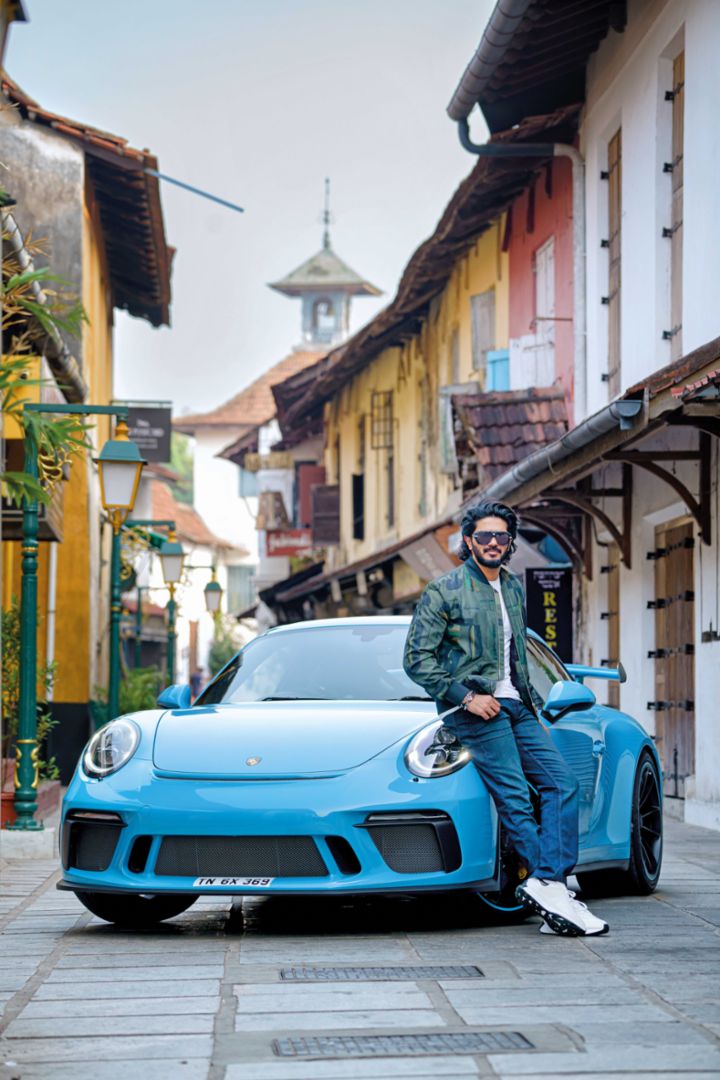
Home as an anchor:
Salmaan returned to Kochi for good after a few years in Chennai. Home to his family, his childhood memories, and his work as an actor, the “Queen of the Arabian Sea” is an important pillar for him. The Malayalam movie industry is also based in the coastal metropolis. Salmaan has filmed a variety of movies in his native tongue, including “Comrade in America” (2017), “Salute” (2022), and the upcoming “King of Kotha” (2023).
Report by Arjun Ramachandran for christophorus.porsche.com
Photos by Vikram Bawa, Peter Zelei (Getty Images), Travel Wild (Alamy)


